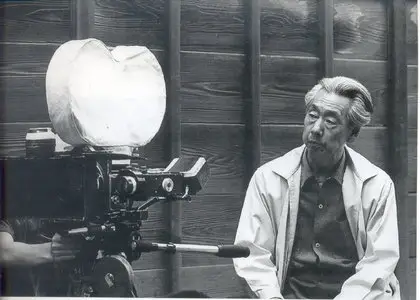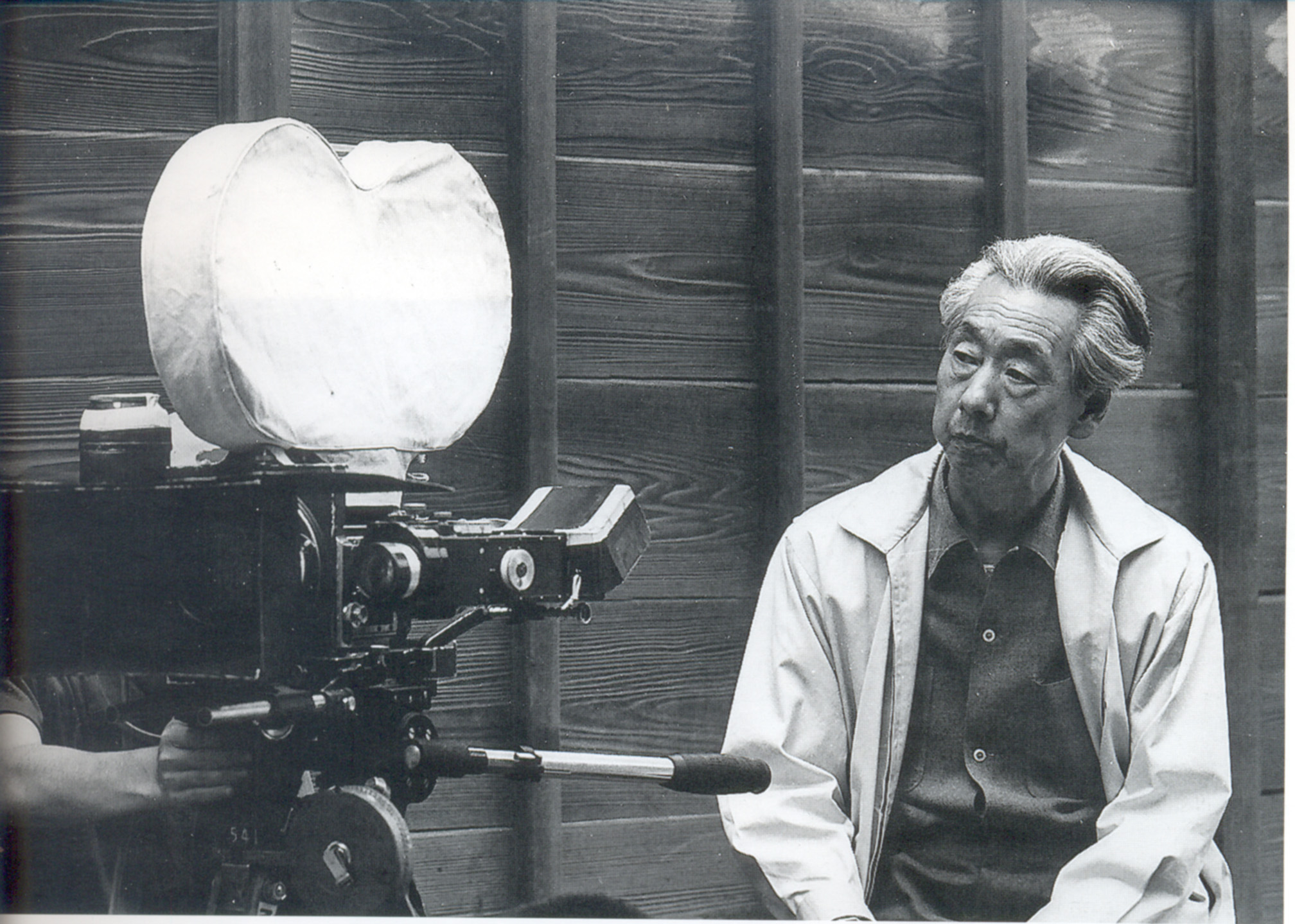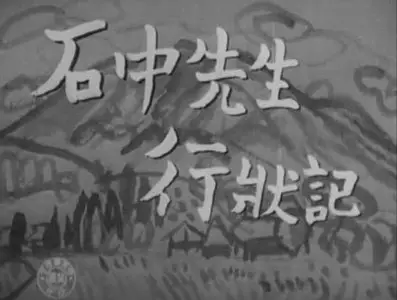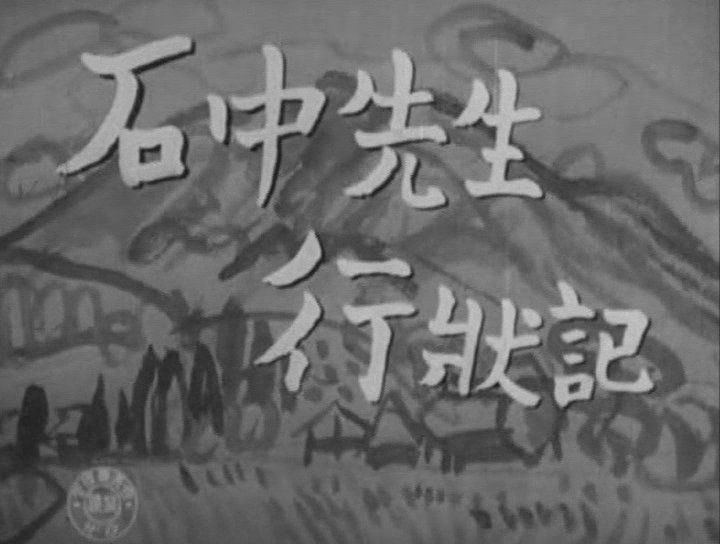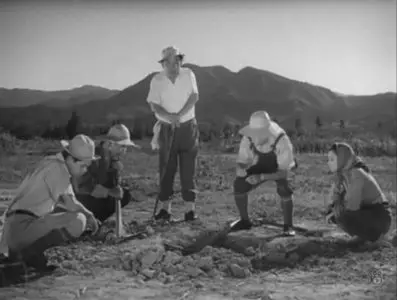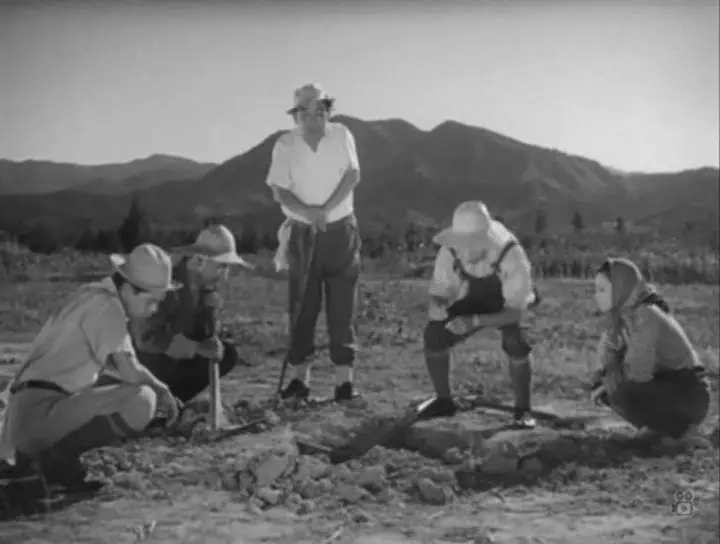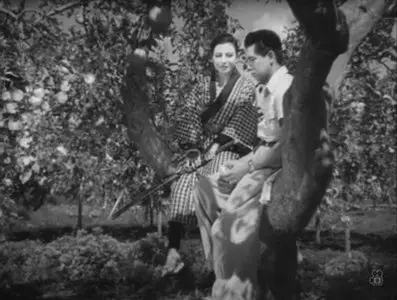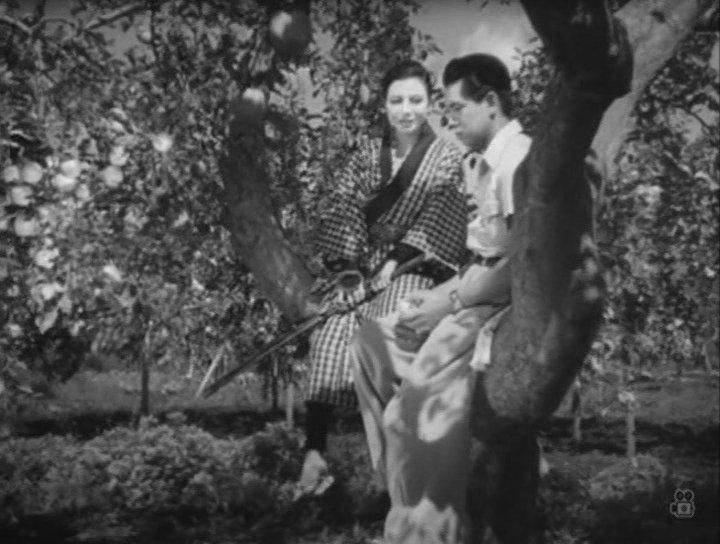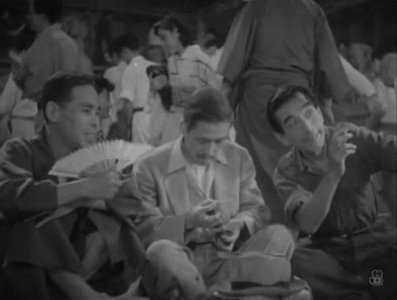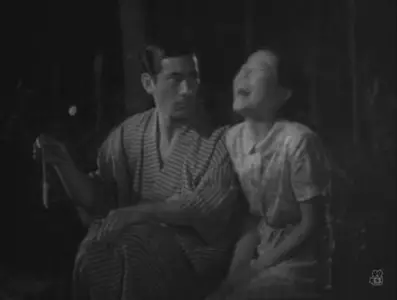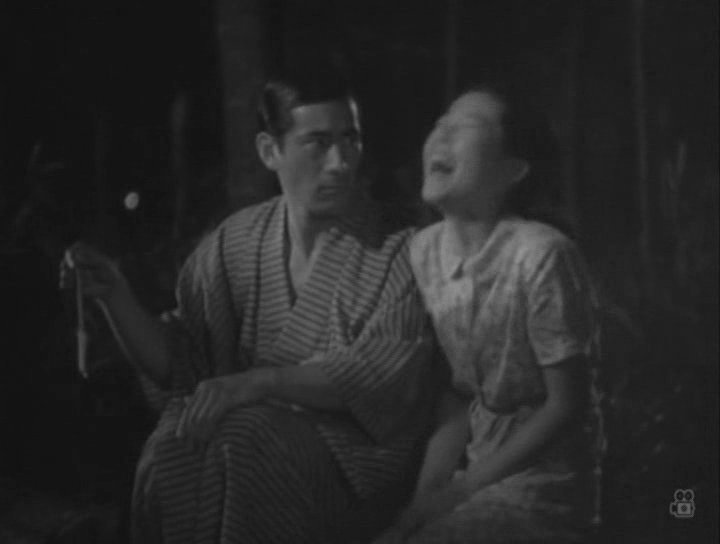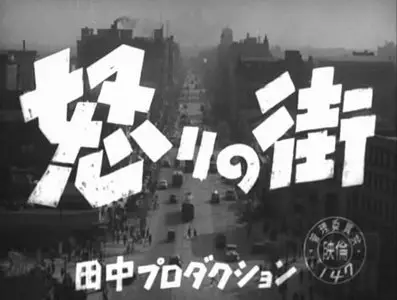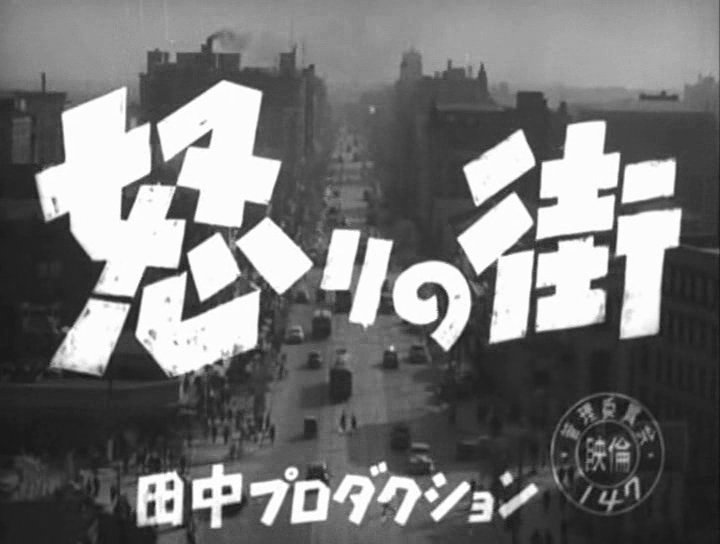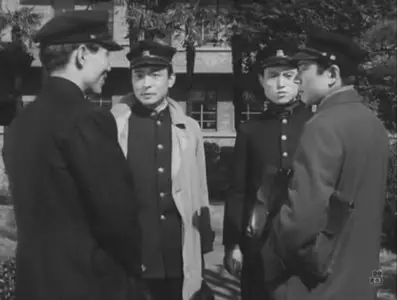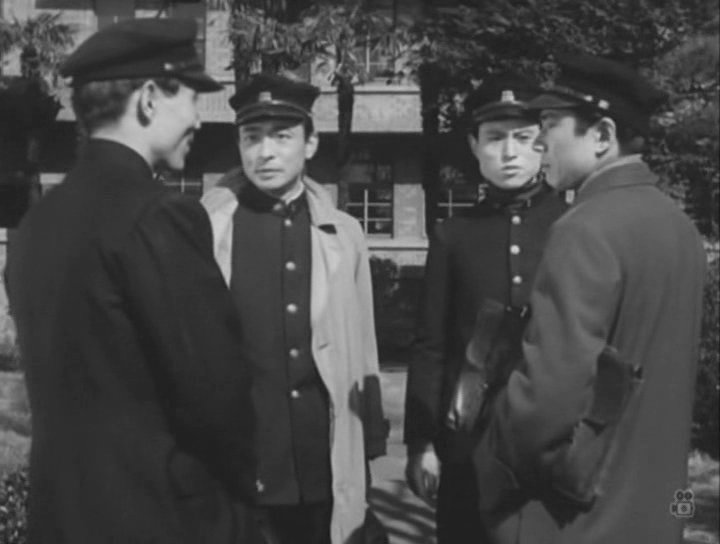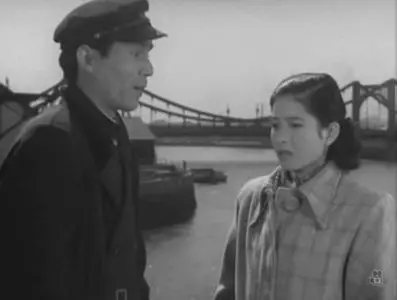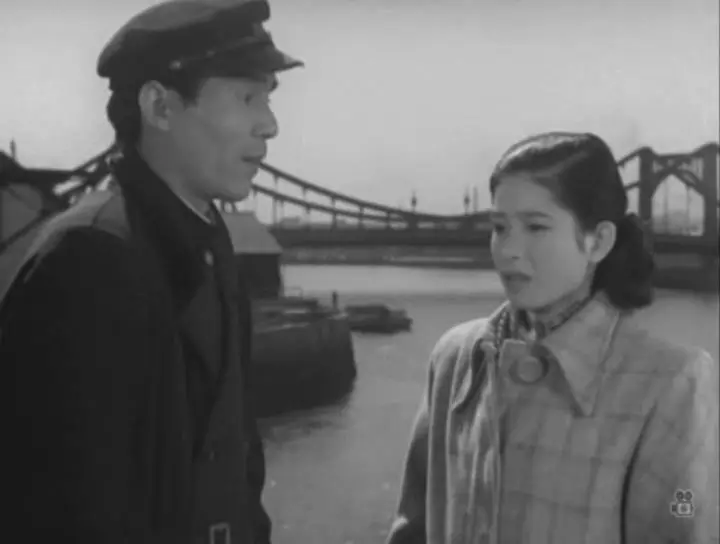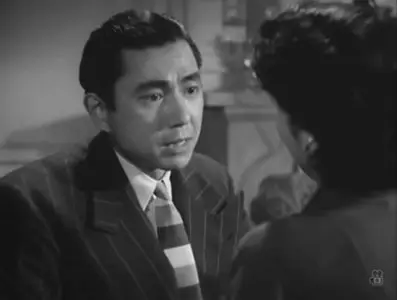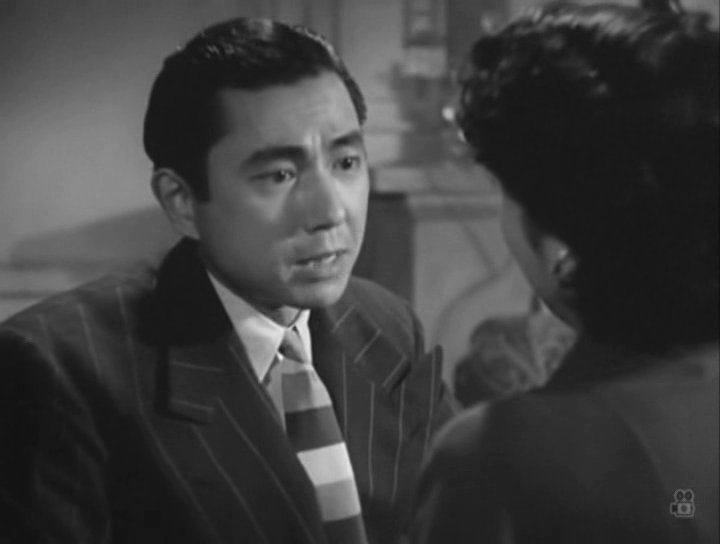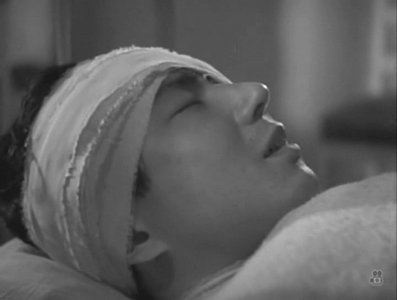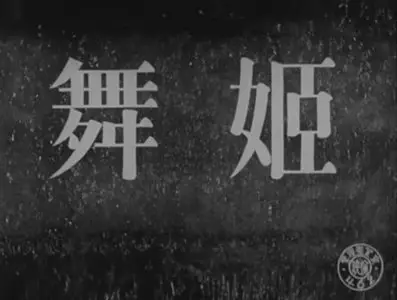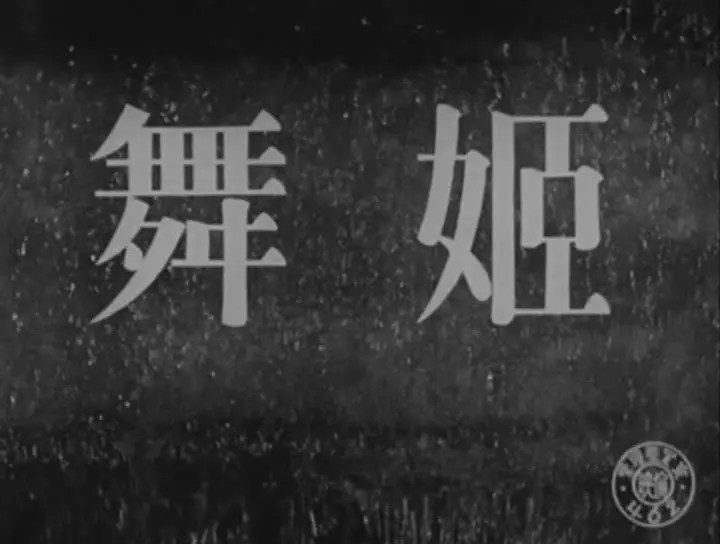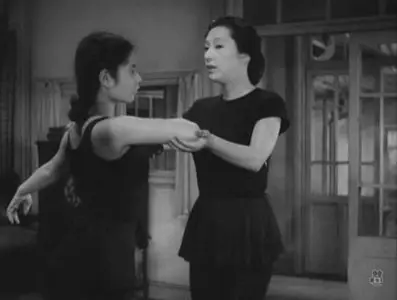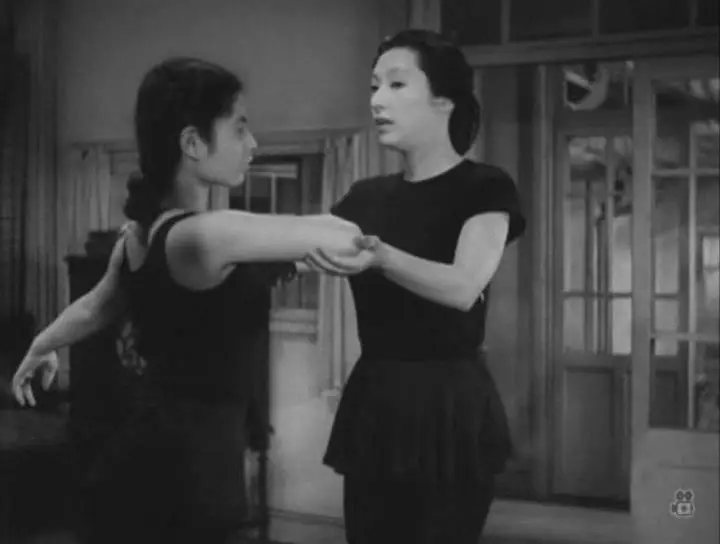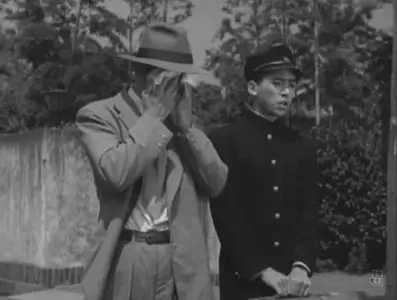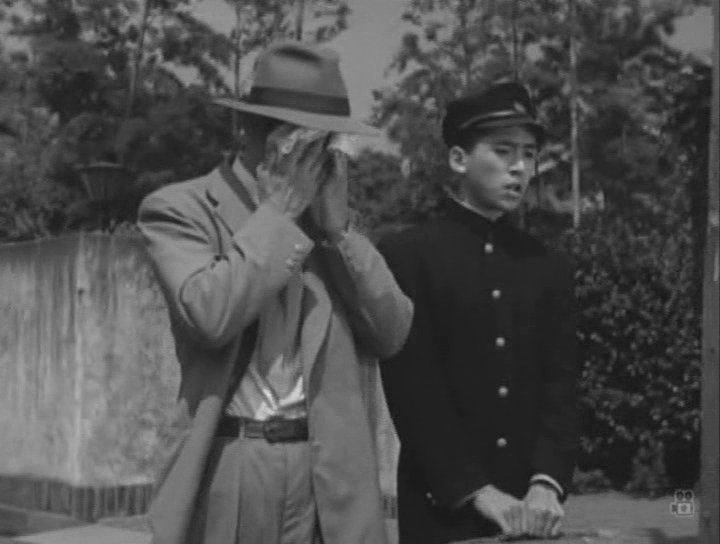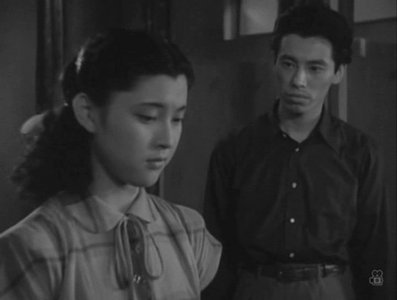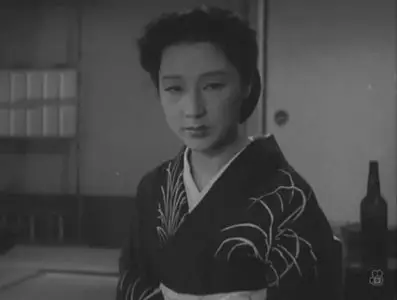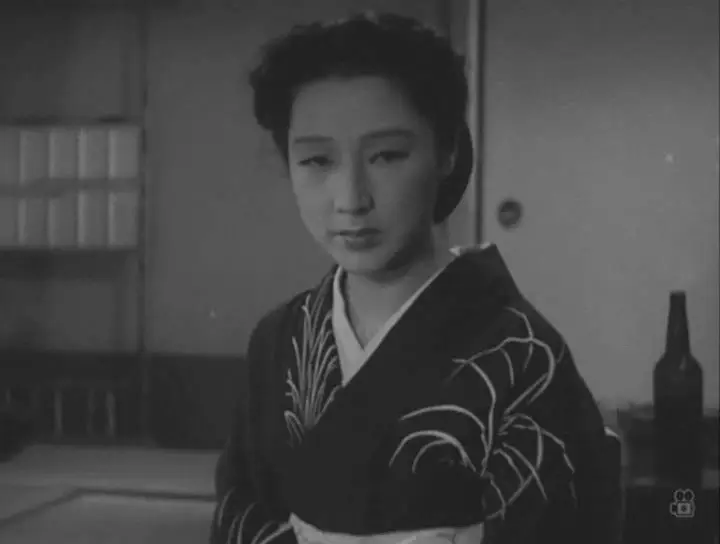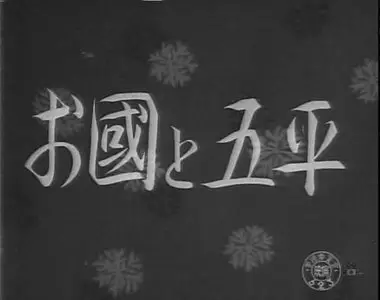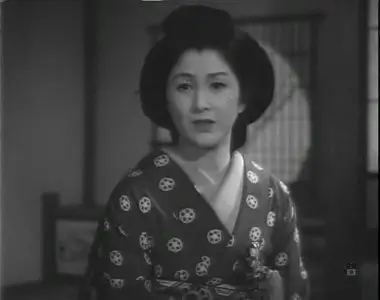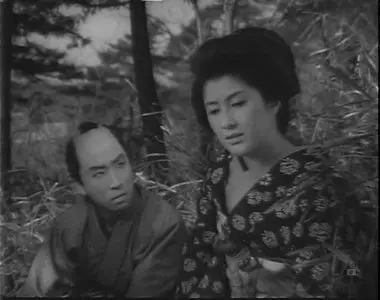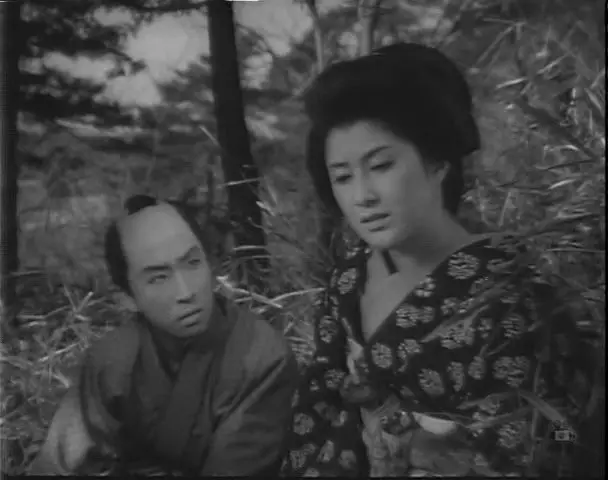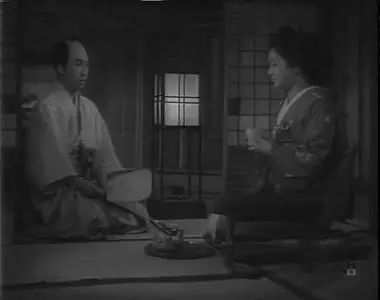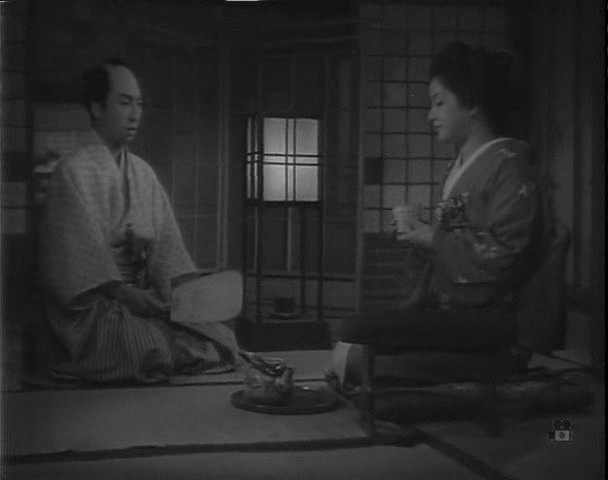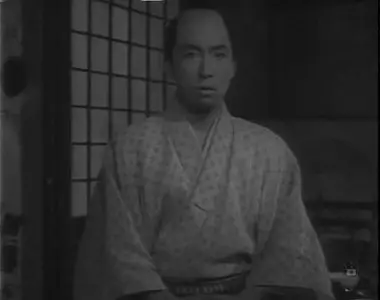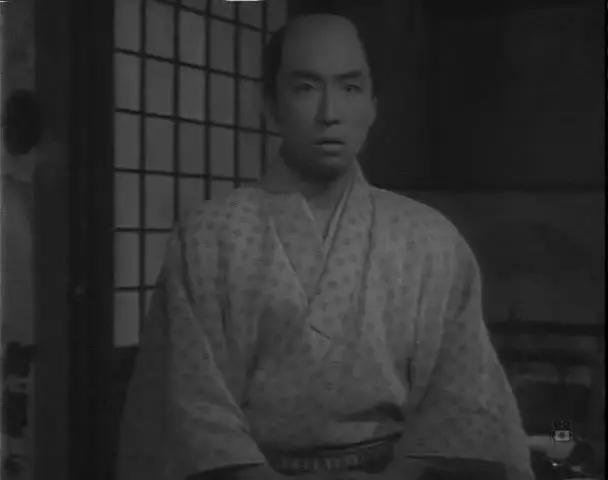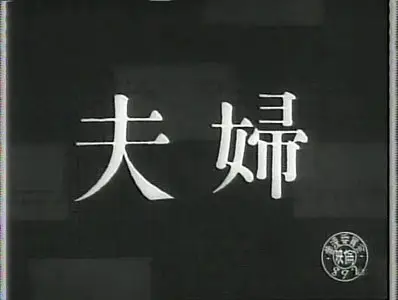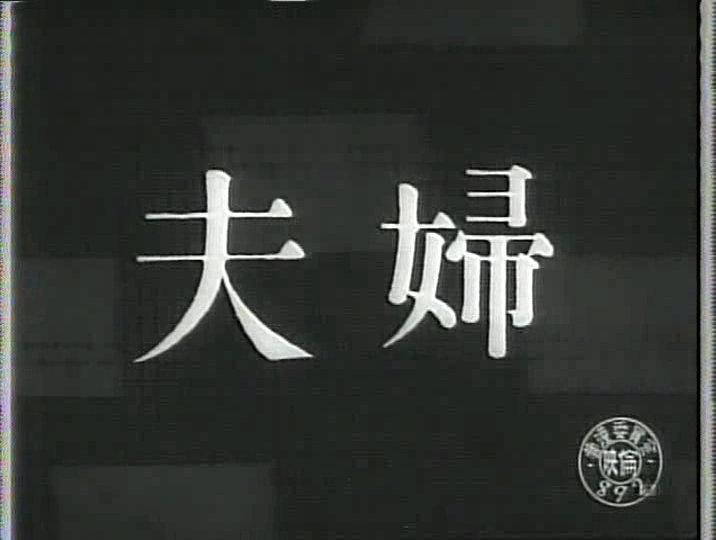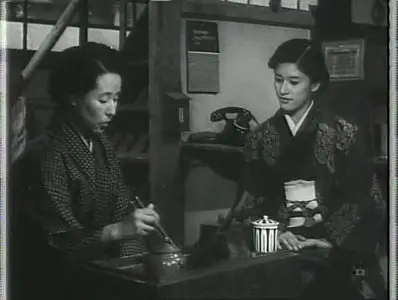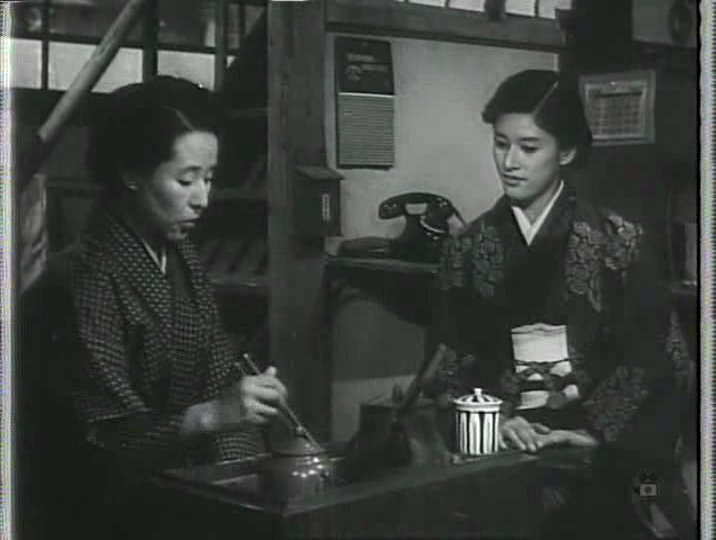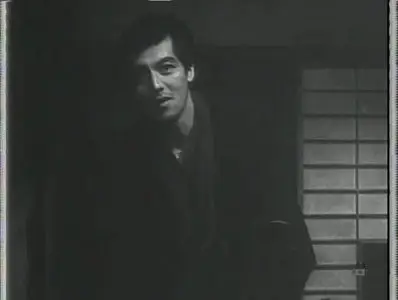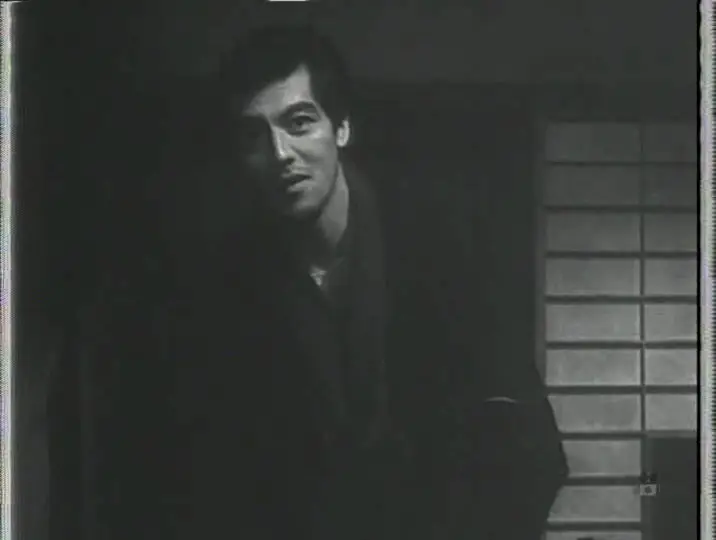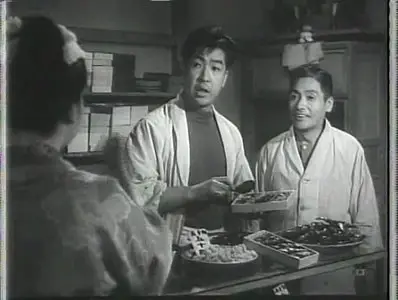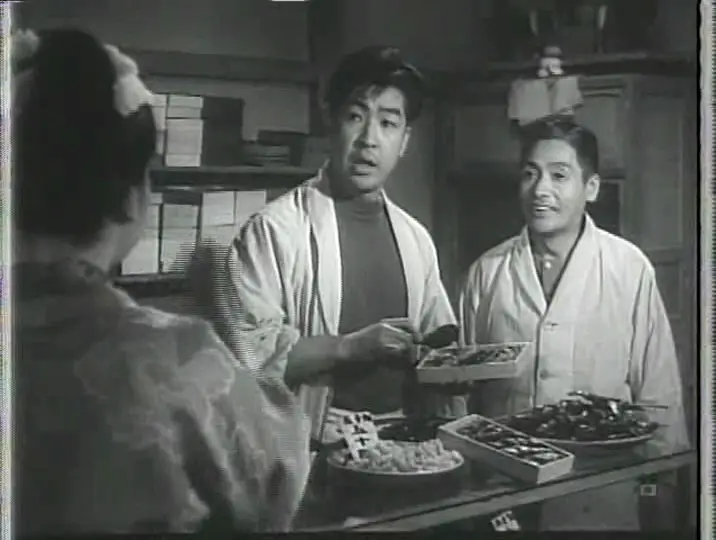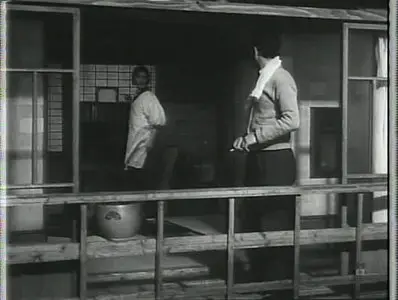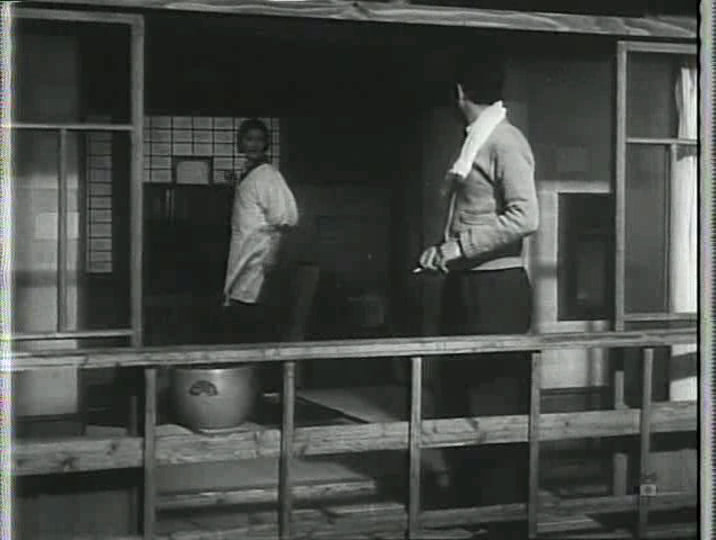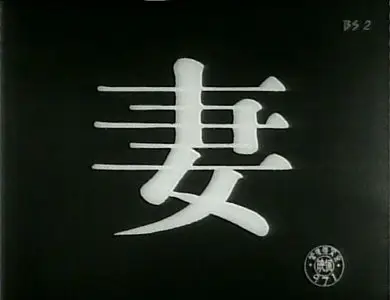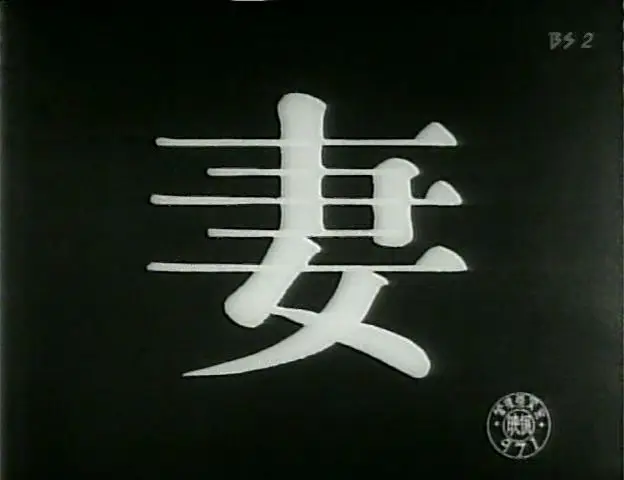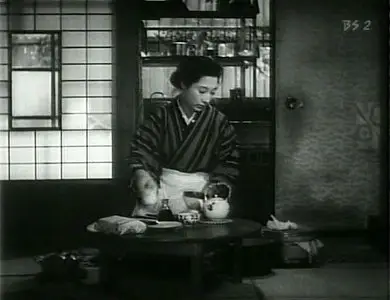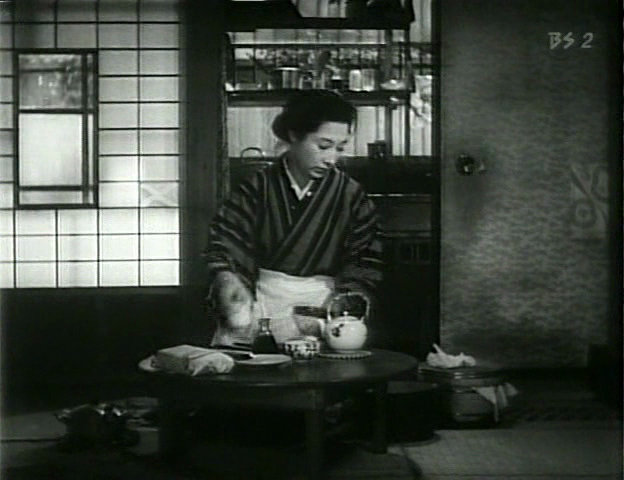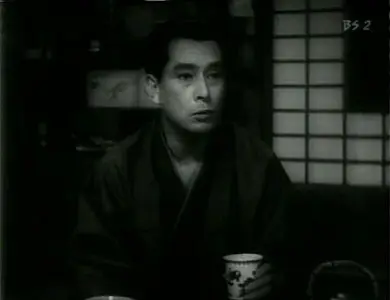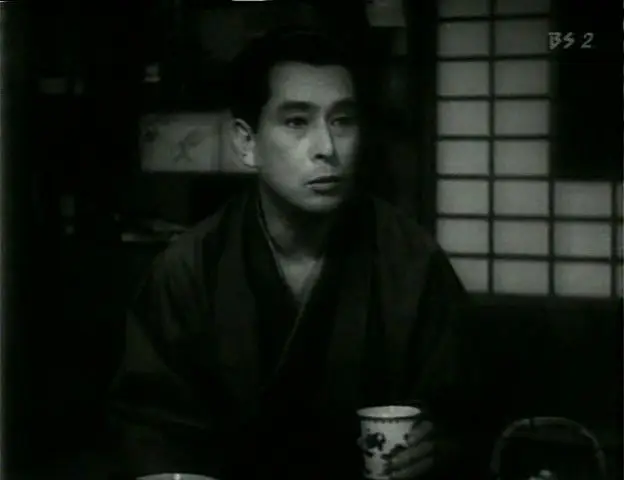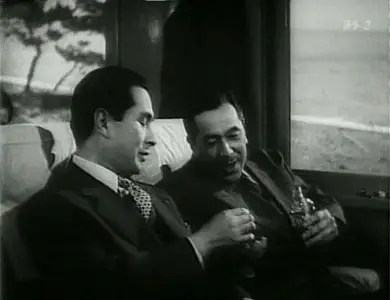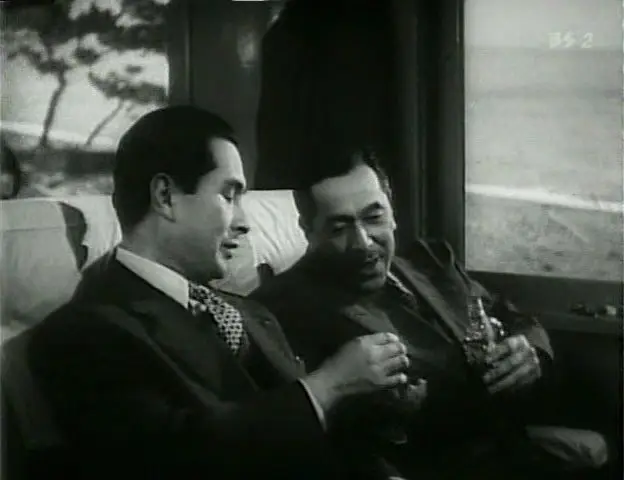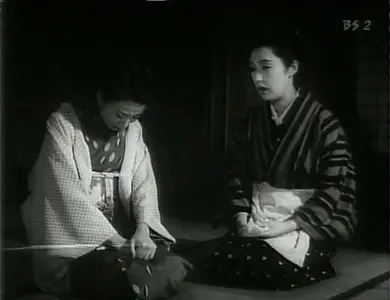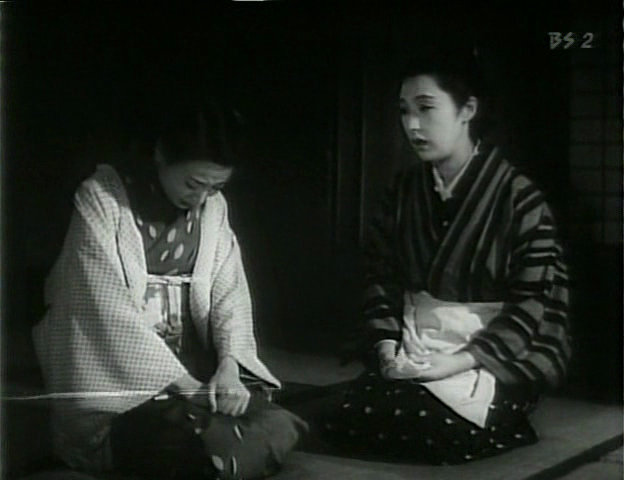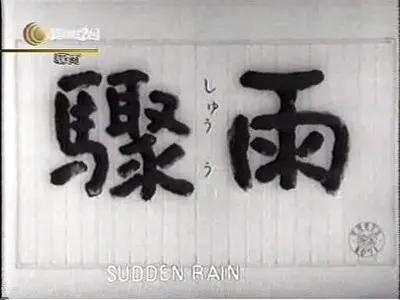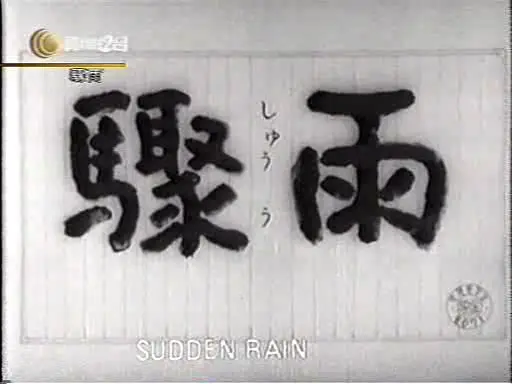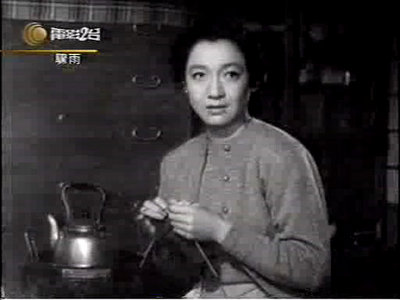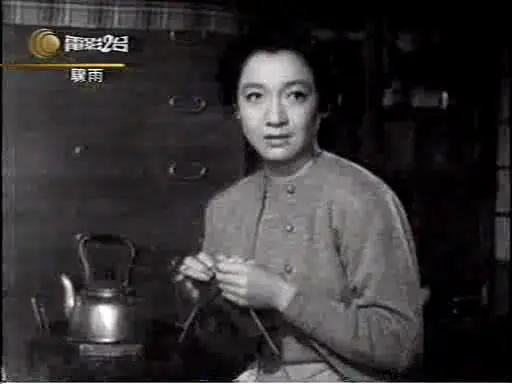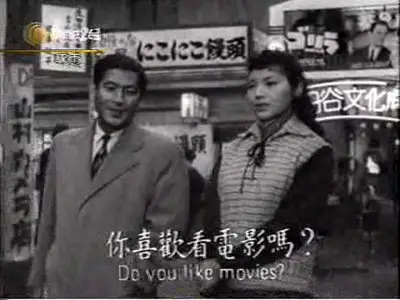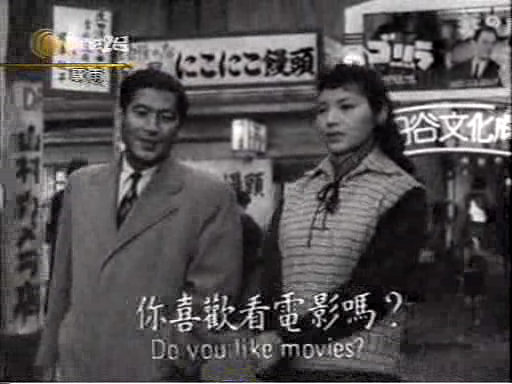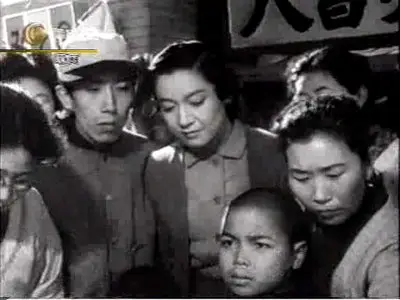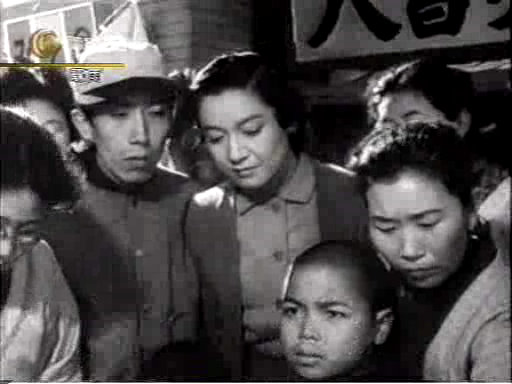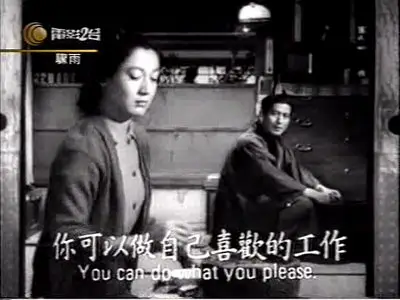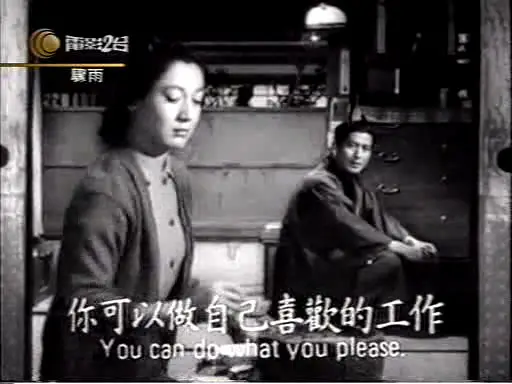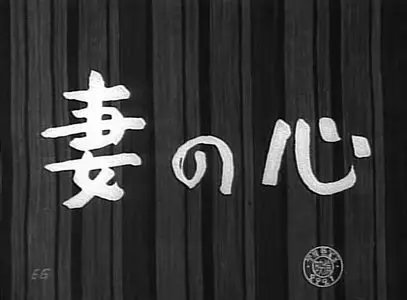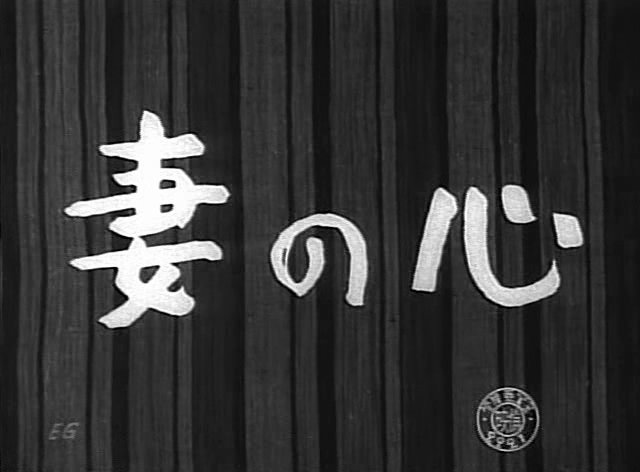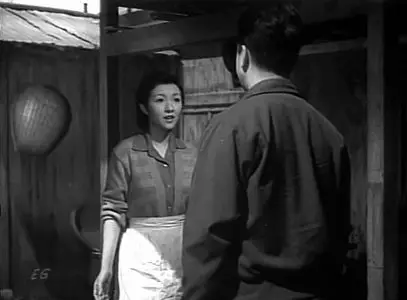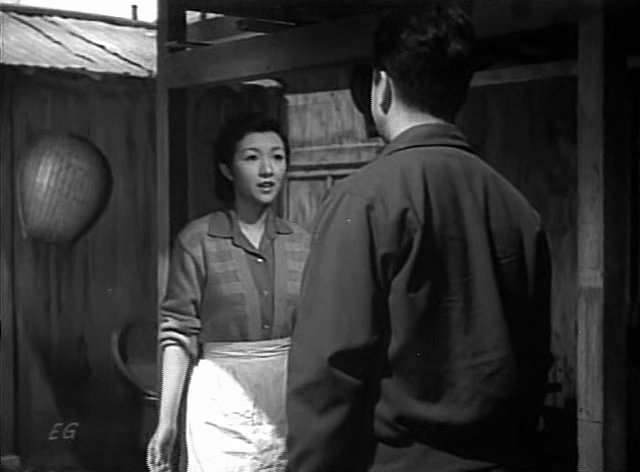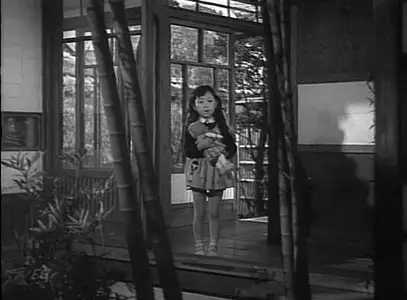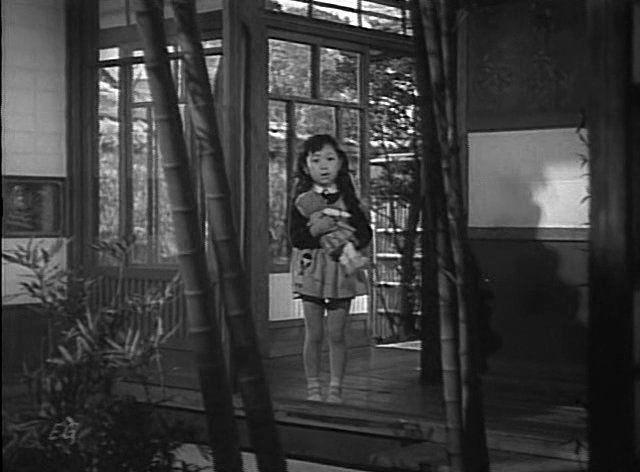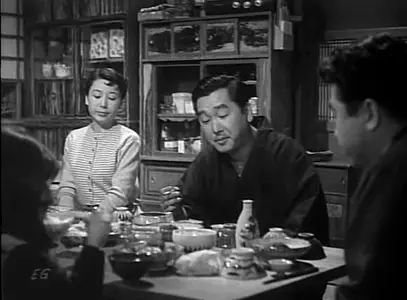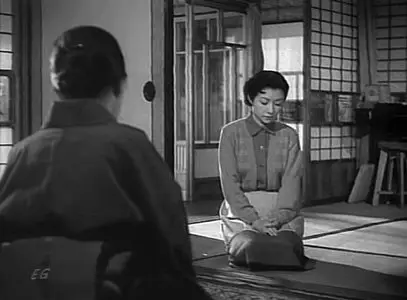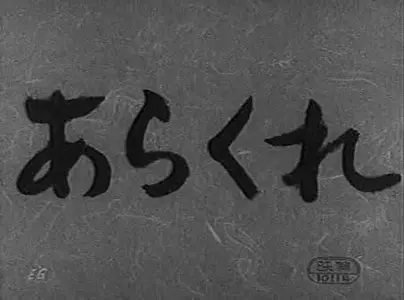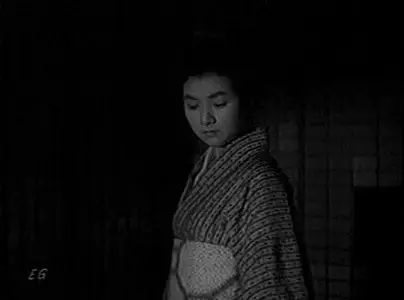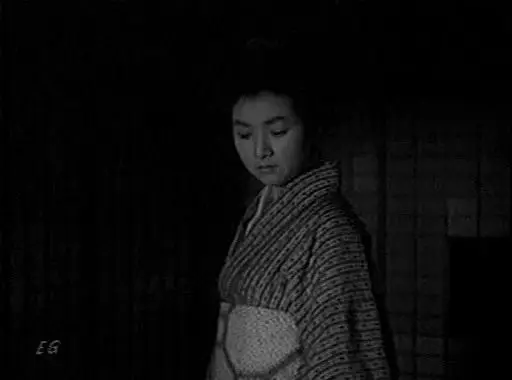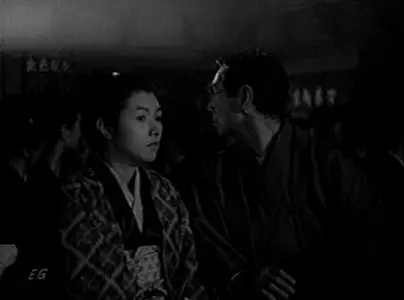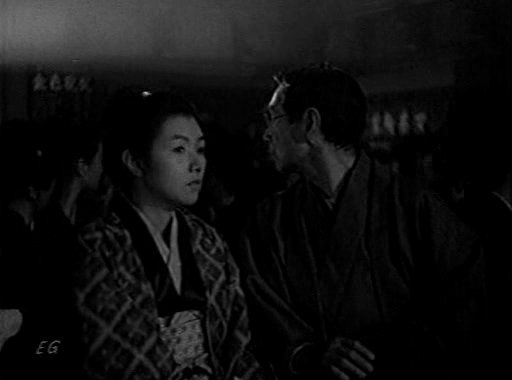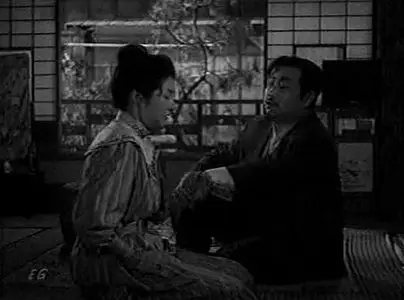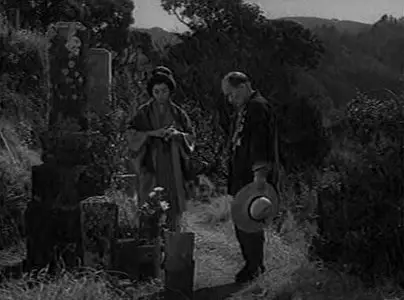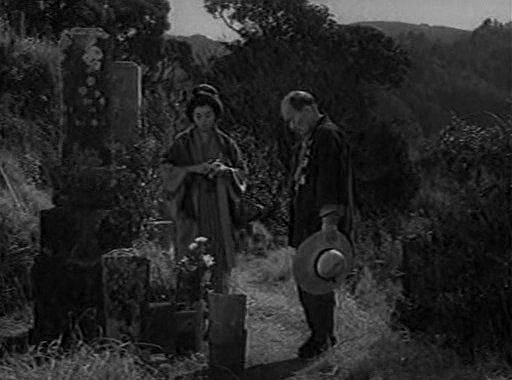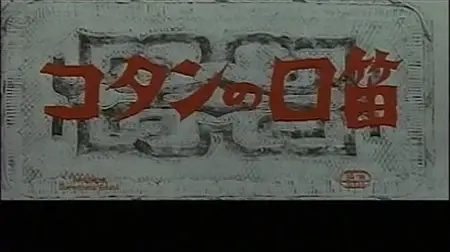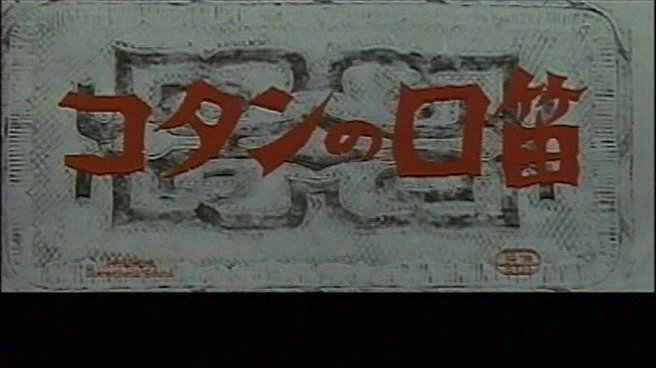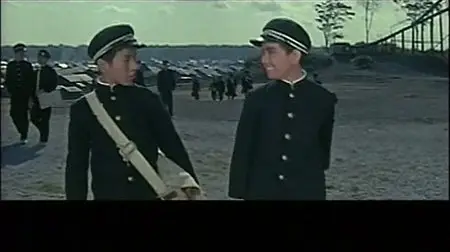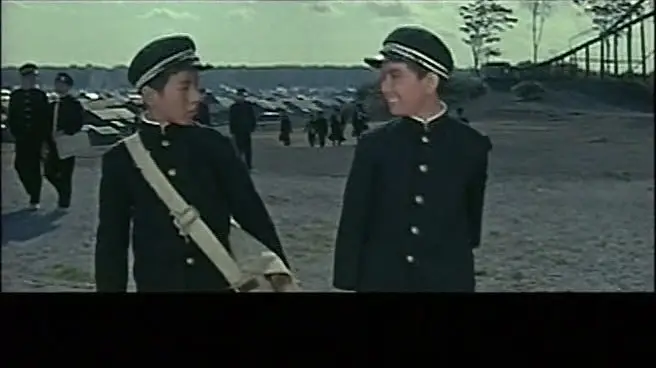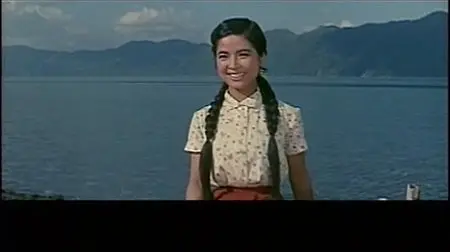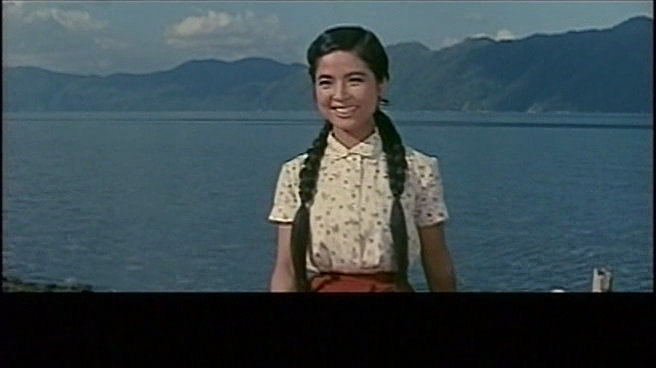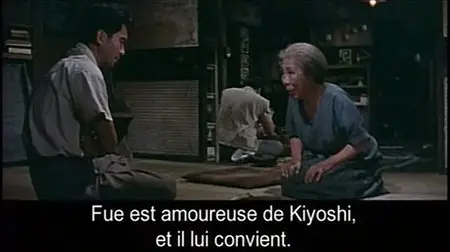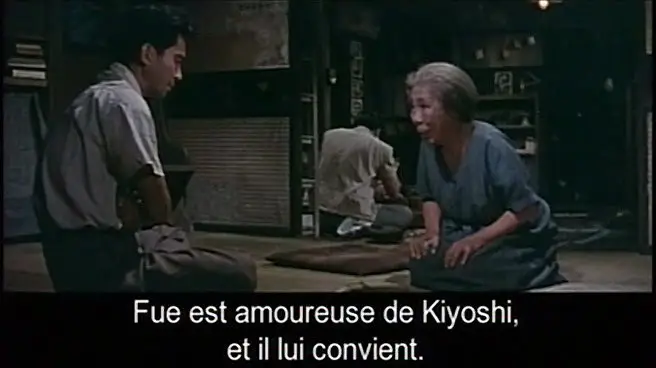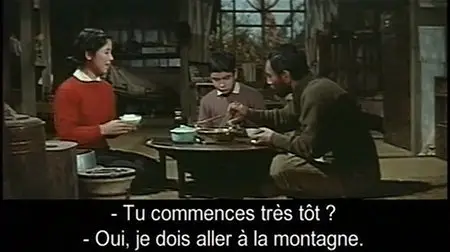Mikio Naruse's 10 films in 1950s
TVRip | AVI | DivX, XviD | Ac3, Mp3 | 11.53 GB
Lang: Japanese | Subtitles: Chinese, English, French | Genre: Classics | Director: Mikio Naruse
TVRip | AVI | DivX, XviD | Ac3, Mp3 | 11.53 GB
Lang: Japanese | Subtitles: Chinese, English, French | Genre: Classics | Director: Mikio Naruse
Mikio Naruse (成瀬巳喜男 , August 20, 1905 – July 2, 1969) was a Japanese filmmaker, screenwriter, and producer who directed some 89 films spanning the period 1930 (towards the end of the silent period in Japan) to 1967.
Naruse is known for imbuing his films with a bleak and pessimistic outlook. He made primarily shomin-geki (working-class drama) films with female protagonists, portrayed by actresses such as Hideko Takamine, Kinuyo Tanaka, and Setsuko Hara. Because of his focus on family drama and the intersection of traditional and modern Japanese culture, his films are frequently compared with the works of Yasujirō Ozu. His reputation is just behind Akira Kurosawa, Kenji Mizoguchi, and Ozu in Japan and internationally; his work remains less well known outside Japan than theirs.
Akira Kurosawa called Naruse's style of melodrama, "like a great river with a calm surface and a raging current in its depths".
Mikio Naruse was born in Tokyo in 1905. For a number of years he worked at the Shochiku film company under Shiro Kido as a property manager and later as an assistant director. He was not permitted to direct a film at Shochiku until 1930, when he made his debut film, Mr. and Mrs. Swordplay (Chanbara fūfū).
Naruse's earliest extant work is Flunky, Work Hard (Koshiben gambare, also known as Little Man Do Your Best) from 1931, where he combined melodrama with slapstick, trying to meet the demands set by Shochiku's Kamata studio, who wanted a mix of laughter and tears. In 1933, he quit Shochiku, and began working for Photo-Chemical Laboratories (later known as Toho).
His first major film was Wife! Be Like a Rose! (1935) (Tsuma yo Bara no Yo ni). It won the Kinema Junpo, and was the first Japanese film to receive theatrical release in the United States (where it was not well received). The film concerns a young woman whose father deserted his family many years before for a geisha. As so often in Naruse's films, the portrait of the "other woman" is nuanced and sympathetic: It turns out, when the daughter visits her father in a remote mountain village, that the second wife is far more suitable for him than the first. The daughter brings her father back with her in order to smooth the way for her own marriage, but the reunion with the first wife – a melancholy poetess – is disastrous: They have nothing in common, and the father returns to wife number two.
In the war years, Naruse went through a slow breakup with his wife Sachiko Chiba (who had starred in Wife! Be Like a Rose!). Naruse himself claimed to have entered a period of severe depression as a result of this. In the postwar period he collaborated with others more often, less frequently writing his own scripts. Notable successes included Mother (1952) (Okasan), a realistic look at family life in the postwar period, which received theatrical distribution in France, and 1955's Floating Clouds (Ukigumo), a doomed love story based (like many of Naruse's films) on a novel by Fumiko Hayashi.
When a Woman Ascends the Stairs (1960) (Onna ga kaidan o agaru) tells the story of an aging bar hostess trying to adapt to modern times. The film is notable for having almost no close-up shots or exterior scenes. Scattered Clouds (1967) (Miidaregumo) (a.k.a. Two in the Shadow) was his last film, and is regarded as one of his greatest works. A tale of impossible love between a widow and the driver who accidentally killed her husband, it was made two years before his death.
Naruse is known as particularly exemplifying the Japanese concept of mono no aware, the awareness of the transience of things, and a gentle sadness at their passing.
Naruse's films contain simple screenplays, with minimal dialogue, unobtrusive camera work, and low-key production design. Earlier films employ a more experimental, expressionist style, but he is best known for the style of his later work: deliberately slow and leisurely, designed to magnify the everyday drama of ordinary Japanese people’s trials and tribulations, and leaving maximum scope for his actors to portray psychological nuances in every glance, gesture, and movement.
Naruse filmed economically, using money- and time-saving techniques that other directors shunned, such as shooting each actor delivering his or her lines of dialogue separately, and then splicing them together into chronological order in post-production (this reduced the amount of film wasted with each retake, and allowed a dialogue scene to be filmed with a single camera). Perhaps unsurprisingly, money is itself a major theme in these films, possibly reflecting Naruse's own childhood experience of poverty: Naruse is an especially mordant observer of the financial struggles within the family (as in Ginza Cosmetics, 1951, where the female protagonist ends up supporting all her relatives by working in a bar, or A Wife's Heart, 1956, where a couple is swindled out of a bank loan by the in-laws).
1. Ishinaka sensei gyojoki aka Conduct Report on Professor Ishinaka (1950)
TVRip | AVI | 720 x 540 | XviD @ 1959 Kbps | Mp3 @ 128 Kbps | 1:33:24 | 1.36 GB
Lang: Japanese | Subtitles: No | Genre: Classics | Director: Mikio Naruse
IMDB
TVRip | AVI | 720 x 540 | XviD @ 1959 Kbps | Mp3 @ 128 Kbps | 1:33:24 | 1.36 GB
Lang: Japanese | Subtitles: No | Genre: Classics | Director: Mikio Naruse
IMDB
In Conduct Report on Professor Ishinaka (Ishinaka sensei gyojoki, 1950), the professor (Miyata Shigeo) is a novelist living in Aomori prefecture, the northernmost tip of Honshu, just south of Hokkaido, but the professor has only a minor role in the film named for his character. He appears in each of the three short vignettes that make up the film as a local authority who is consulted by the townspeople. Each story features the courtship of a young man and woman, and in each instance it is suggested that the professor will undoubtedly write a novel about the events that have transpired. Based on an original story by Ishizaka Yojiro, the film has a reflexive element by which it comments on its own process of taking the materials of everyday life and transforming them into narrative. This realist conceit is enhanced by the rural setting, which is photographed with some care, including the mountainous landscapes and the farmhouse interiors. Many of the actors have strong Aomori accents, and Naruse even includes footage of several local festivals, complete with lanterns, banners, dances, and songs. The film is in some respects a sequel to Hideko the Bus Conductor, taking up both its rural setting and its writer character, although the women have grown up a little since 1941. (from www.worldscinema.com)
2. Ikari no machi aka Angry Street (1950)
TVRip | AVI | 720 x 544 | XviD @ 1691 Kbps | Mp3 @ 128 Kbps | 1:45:12 | 1.34 GB
Lang: Japanese | Subtitles: English | Genre: Classics | Director: Mikio Naruse
IMDB
TVRip | AVI | 720 x 544 | XviD @ 1691 Kbps | Mp3 @ 128 Kbps | 1:45:12 | 1.34 GB
Lang: Japanese | Subtitles: English | Genre: Classics | Director: Mikio Naruse
IMDB
Immediately following Professor Ishinaka, Naruse returned to Tokyo for a very different film, depicting the moral decadence of postwar Tokyo. Strongly influenced by the street realism of film noir, The Angry Street includes a great deal of location shooting in the rebuilt city, including downtown streets, residential neighborhoods, the campus of the University of Tokyo, and the high life of jazzy dance halls. Sudo (Hara Yasumi) and Mori (Uno Jukichi) are two university students who make money by picking up rich girls in dance clubs and conning them into giving them cash. Mori is the brains of the operation, and Sudo is the suave dancer who picks up the girls. Over the course of the film, Sudo becomes involved with three different girls and is drawn into the gangster milieu, which he seems unable to resist even though he is responsible for his mother, grandmother, and sister, Masako (Wakayama Setsuko). In this world of bad boys and girls, Masako is the pillar of strength and moral virtue who finally enables Mori to straighten out. (from www.asiatorrents.com)
3. Maihime aka Dancing Girl (1951)
TVRip | AVI | 720 x 544 | XviD @ 2318 Kbps | Mp3 @ 128 Kbps | 1:25:04 | 1.45 GB
Lang: Japanese | Subtitles: English | Genre: Classics | Director: Mikio Naruse
IMDB
TVRip | AVI | 720 x 544 | XviD @ 2318 Kbps | Mp3 @ 128 Kbps | 1:25:04 | 1.45 GB
Lang: Japanese | Subtitles: English | Genre: Classics | Director: Mikio Naruse
IMDB
Dancing Girl (Maihime, 1951) may not be as successful a picture as Ginza Cosmetics or Meshi, but it is an important transitional film, as Naruse deploys some of the flamboyant melodramatic devices that he used in the 1930s in the context of a story that is very much a postwar narrative. Elaborate, distinctive camera movements at moments of high dramatic tension tend to displace acting technique in the representation of psychological states. Used only in conjunction with the two main women characters, Namiko (Takamine Mieko) and her daughter Shinako (Okada Mariko), the camera movements now seem to detract from the emotional weight of the drama. From the failure of this film, we can glimpse something of the change in the aesthetics of realism implicit in the representation of the democratic self of postwar Japan. (from arananfms.blogspot.com)
Screenshot:
Rapidshare Links:
Part 1 | Part 2 | Part 3 | Part 4 | Part 5 | Part 6 | Part 7 | Part 8 | Subtitle
Rapidshare Links:
Part 1 | Part 2 | Part 3 | Part 4 | Part 5 | Part 6 | Part 7 | Part 8 | Subtitle
4. Okuni to Gohei aka Okuni and Gohei (1952)
TVRip | AVI | 608 x 480 | XviD @ 932 Kbps | Mp3 @ 128 Kbps | 1:31:03 | 699 MB
Lang: Japanese | Subtitles: English | Genre: Classics | Director: Mikio Naruse
IMDB
TVRip | AVI | 608 x 480 | XviD @ 932 Kbps | Mp3 @ 128 Kbps | 1:31:03 | 699 MB
Lang: Japanese | Subtitles: English | Genre: Classics | Director: Mikio Naruse
IMDB
Based on a kabuki play in which a woman (Okuni) and one of the retainers of her late husband (Gohei) seek revenge upon the man, Tomonojo, who killed her husband following a love affair with the aforementioned woman. (from arananfms.blogspot.com)
5. Fufu aka Husband And Wife (1953)
TVRip | AVI | 716 x 480 | DivX @ 1000 Kbps | Mp3 @ 128 Kbps | 1:26:41 | 708 MB
Lang: Japanese | Subtitles: English | Genre: Classics | Director: Mikio Naruse
IMDB
TVRip | AVI | 716 x 480 | DivX @ 1000 Kbps | Mp3 @ 128 Kbps | 1:26:41 | 708 MB
Lang: Japanese | Subtitles: English | Genre: Classics | Director: Mikio Naruse
IMDB
The context here is tightly drawn in scope around a couple and their colleagues and friends, and the intended theme of marital discord is consistent and pervasive. The plot weaves around within these constraints, bringing out the various aspects of the eternal battle of the sexes. What do you do if your spouse is boring? How do you respond if your spouse is much admired? If your marriage is a cause of distress, whose fault is it? And how do you put it right? Good acting, if a little melodramatic and obvious compared with some of his other films. Effective use of limited interiors but little exterior work, so a more limited palette in sets and prominent cast than is sometimes the case. Really, it has a definite feel of a play turned into a film, with limited use of cinematic inspired techniques. As ever, interesting insights for foreigners like me into Japanese customs. An amusing script helps, as does an extremely watchable leading actress. So, not one of Naruse's best, but all Naruse's are worth watching and this succeeds in being thoroughly entertaining, particularly if you are or have been married. (from imdb user comment)
6. Tsuma aka Wife (1953)
TVRip | AVI | 624 x 480 | XviD @ 1828 Kbps | Ac3 @ 256 Kbps | 1:35:49 | 1.40 GB
Lang: Japanese | Subtitles: English | Genre: Classics | Director: Mikio Naruse
IMDB
TVRip | AVI | 624 x 480 | XviD @ 1828 Kbps | Ac3 @ 256 Kbps | 1:35:49 | 1.40 GB
Lang: Japanese | Subtitles: English | Genre: Classics | Director: Mikio Naruse
IMDB
The competing husband and wife voiceovers that open the 1953 Mikio Naruse melodrama Wife set up a character dialectic that never comes to fruition and though the title suggests the resulting imbalance may be intentional, the film still plays out as a deeply flawed examination of marital discord. The typical Narusian roles are reversed with wife Mihoko Nakagawa (Mieko Takamine) holding sway over husband Toichi (Ken Uehara) until the cold, repetitious rhythms of their decade-old relationship drive him into the arms of his kind-hearted secretary. While Wife is primarily Takamine's show, it is to the director's credit that he clearly does not favor any one of his characters over another. Naruse is a keen observer of the whole spectrum of human behavior, a portraitist who depicts his subjects in all their raw, yet submissive complexity. In Wife's best scene Toichi meets his lover in Tokyo, only to discover she's brought along her rarely mentioned young son. The child hangs off his mother like an appendage and it's clear the perceived perfection of the couple's extramarital liaison is suddenly subject to a severe reality check. Toichi gazes deep into his lover's eyes before lowering his sight, rather contemptuously, to the child. Naruse then smash-cuts to a different setting: a restaurant, where the boy greedily slurps his soda while his adult companions look on in polite consternation. Unlike many of his cinema contemporaries (both in and out of Japan) Naruse views children skeptically—they seem potentially vicious adults-in-training who go about their business in a distressingly carefree manner that, in its unwitting ignorance, often does as much—if not more—harm than even the most bald-faced grown-up machinations. The young son in Wife joins both the budding boy capitalist of Daughters, Wives and a Mother and the Takamine-taunting tricycle duo from When a Woman Ascends the Stairs as one in a long line of venomous Naruse depictions of not-so-innocent adolescents. (from arananfms.blogspot.com)
Screenshot:
Rapidshare Links:
Part 1 | Part 2 | Part 3 | Part 4 | Part 5 | Part 6 | Part 7 | Part 8 | Part 9 | Part 10 | Part 11 | Part 12 | Part 13 | Part 14 | Part 15
Rapidshare Links:
Part 1 | Part 2 | Part 3 | Part 4 | Part 5 | Part 6 | Part 7 | Part 8 | Part 9 | Part 10 | Part 11 | Part 12 | Part 13 | Part 14 | Part 15
7. Shu u aka Sudden Rain (1956)
TVRip | AVI | 512 x 384 | XviD @ 521 Kbps | Mp3 @ 128 Kbps | 1:29:55 | 423 MB
Lang: Japanese | Subtitles: Chinese, English | Genre: Classics | Director: Mikio Naruse
IMDB
TVRip | AVI | 512 x 384 | XviD @ 521 Kbps | Mp3 @ 128 Kbps | 1:29:55 | 423 MB
Lang: Japanese | Subtitles: Chinese, English | Genre: Classics | Director: Mikio Naruse
IMDB
The greatest shock of Sudden Rain comes when Ryotaro Namiki (Shuji Sano) declares to his wife Fumiko (Setsuko Hara) that she has no dreams. For those familiar with Hara's typically incandescent screen presence this is less of an insult than pure blasphemy, though it's all to director Mikio Naruse's subversive point. A typically subdued, perpetually smiling presence in many Yasujiro Ozu films (a persona also on display in Naruse's own Daughters, Wives and a Mother), Hara in Sudden Rain uses her trademark beatific grin as a kind of Noh-theater disguise masking a virulent emotional undercurrent. From first frame to last, Fumiko and Ryotaro engage in the most vicious verbal battles, hurling insults both subtle and bald-faced as they navigate the treacherous terrain of a marriage gone stale. Playing, in toto, like a Henry James adaptation of The War of the Roses, Sudden Rain's initial scenes are mostly relegated to intimate interiors, charting the husband and wife's repetitive rituals with an incisive psychological precision. Naruse slowly expands his scope, introducing a succession of neighbors, co-workers, and acquaintances inhabiting the couple's Tokyo suburb. All are varied, lovingly detailed individuals who, in one way or another, comment on and drive the central husband/wife drama to its climactic sequence, a transcendent breaking point/resolution in which Ryotaro and Fumiko deliriously knock a child's balloon between them. Particular attention should be paid to Naruse's use of music in the film: the omnipresent piano score not only hints at one character's renouncement of a lifelong artistic desire, it also hilariously blurs the line between diagetic and non-diagetic sound, revealing an unexpectedly playful side to a director far-too-often characterized as a stalwart pessimist. (from slantmagazine.com)
8. Tsuma no kokoro aka A Wife's Heart (1956)
TVRip | AVI | 640 x 472 | Xvid @ 1996 Kbps | Mp3 @ 128 Kbps | 1:37:26 | 1.45 GB
Lang: Japanese | Subtitles: English | Genre: Classics | Director: Mikio Naruse
IMDB
TVRip | AVI | 640 x 472 | Xvid @ 1996 Kbps | Mp3 @ 128 Kbps | 1:37:26 | 1.45 GB
Lang: Japanese | Subtitles: English | Genre: Classics | Director: Mikio Naruse
IMDB
Released in 1956, in between Sudden Rain and Flowing, starring Hideko Takamine, and the second and last Naruse film to feature Toshirô Mifune (the first was 1950's Conduct Report on Professor Ishinaka). (from arananfms.blogspot.com)
Screenshot:
Rapidshare Links:
Part 1 | Part 2 | Part 3 | Part 4 | Part 5 | Part 6 | Part 7 | Part 8 | Part 9 | Part 10 | Part 11 | Part 12 | Part 13 | Part 14 | Part 15
Rapidshare Links:
Part 1 | Part 2 | Part 3 | Part 4 | Part 5 | Part 6 | Part 7 | Part 8 | Part 9 | Part 10 | Part 11 | Part 12 | Part 13 | Part 14 | Part 15
9. Arakure aka Untamed Woman (1957)
TVRip | AVI | 512 x 380 | Xvid @ 1306 Kbps | Ac3 @ 256 Kbps | 2:00:39 | 1.32 GB
Lang: Japanese | Subtitles: English | Genre: Classics | Director: Mikio Naruse
IMDB
TVRip | AVI | 512 x 380 | Xvid @ 1306 Kbps | Ac3 @ 256 Kbps | 2:00:39 | 1.32 GB
Lang: Japanese | Subtitles: English | Genre: Classics | Director: Mikio Naruse
IMDB
Although programmed in Film Forum's retrospective on the work of Japanese actor Nakadai Tatsuya, Nakadai barely appears in Untamed (1957), but you won't hear any complaints from me. This is a Mikio Naruse film, a studio director if there ever was one, the same man who said to his frequent star, if not muse, Takamine Hideko after he retired that his ideal film would be "one with no exteriors and no sets—only actors working in front of white backdrops." We admire Naruse for his realism—both psychological and social—and for his pessimism, pushing farther than Ozu's melancholy or Mizoguchi's tragedy, about human relationships in a world driven by money. Yet perhaps Naruse's often elaborate stories are more than anything excuses to explore the breadth of variety and humanism, not to mention inhumanity, in the expressions of actors in front of the camera. (from arananfms.blogspot.com)
Screenshot:
Rapidshare Links:
Part 1 | Part 2 | Part 3 | Part 4 | Part 5 | Part 6 | Part 7 | Part 8 | Part 9 | Part 10 | Part 11 | Part 12 | Part 13 | Part 14
Rapidshare Links:
Part 1 | Part 2 | Part 3 | Part 4 | Part 5 | Part 6 | Part 7 | Part 8 | Part 9 | Part 10 | Part 11 | Part 12 | Part 13 | Part 14
10. Kotan no Kuchibue aka Whistling in Kotan (1959)
TVRip | AVI | 656 x 368 | Xvid @ 1200 Kbps | Mp3 @ 128 Kbps | 2:06:05 | 1.17 GB
Lang: Japanese | Subtitles: French | Genre: Classics | Director: Mikio Naruse
IMDB
TVRip | AVI | 656 x 368 | Xvid @ 1200 Kbps | Mp3 @ 128 Kbps | 2:06:05 | 1.17 GB
Lang: Japanese | Subtitles: French | Genre: Classics | Director: Mikio Naruse
IMDB
Hashimoto Shinobu wrote the script based on Ishimori Nobuo’s original story, which won prizes including the first Mimei Literature Award. Depicts an Ainu girl and her younger brother living in a Hokkaido kotan (Ainu village), as they overcome discrimination and poverty. (from Yamagata International Documentary Film Festival site)


